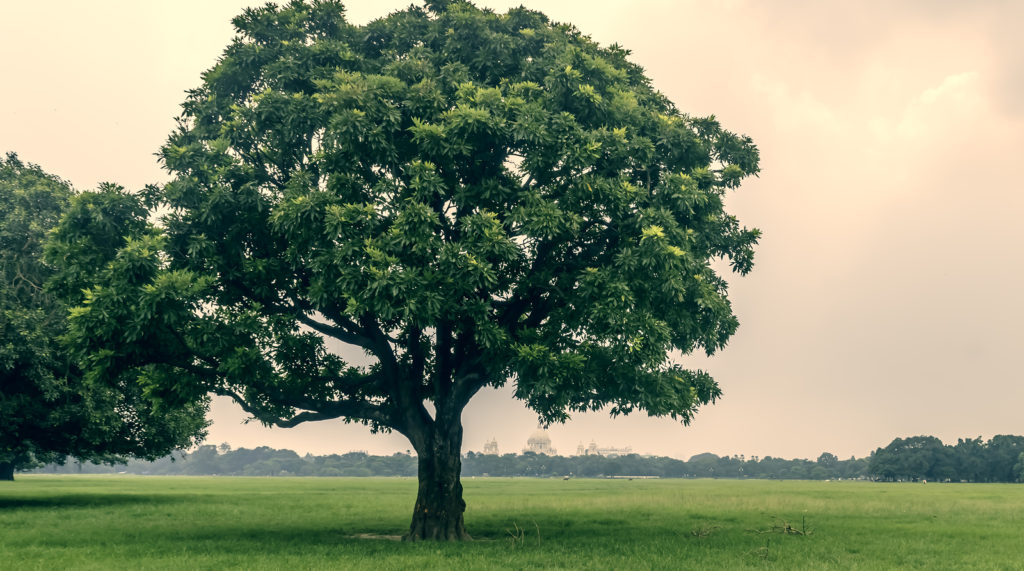Trees are important allies in life for all living organisms on Earth. Did you know that we breathe in oxygen and breathe out carbon dioxide, and trees breathe in carbon dioxide and breathe out oxygen? It’s a true partnership that deserves love and care. There are infinite and correlated benefits trees offer our planet, and even more reasons to admire them.
If you own property with landscaping trees, it is encouraged to take good care of them all year-long to support a long life and endless privileges. To develop an effective tree care plan for your home, it helps to learn some fundamental facts about trees first. A good place to start is with their basic anatomy!
Continue reading to learn the basic parts of a tree and what they do.

Roots
Tree roots are generally located within the top 3 feet of soil, beneath the base of the tree trunk, and can expand 4 to 5 feet past the dripline of the crown. The drip line is basically the perimeter of the tree at its fullest width. Think of an umbrella standing on its handle; the drip line would be where the water drips off of the edge of the umbrella canopy and around the handle. The roots are critical to a tree because they are in charge of collecting and distributing water and mineral nutrients throughout the tree’s internal system. They are also important for stability since they keep a tree strong and grounded, anchoring in place.
Trunk
The trunk provides the shape and support of the whole tree, and holds up the crown. It transports the sugar made by the leaves, and water gathered from the soil. A tree’s trunk is broken down into different primary parts: the inner and outer bark, the cambium cell layer, the sapwood, and then the heartwood. The inner and outer bark are for protection, while the cambium cell layer is the growth center. The sapwood layer transport water like a pipeline, and the heartwood is the central, supportive pillar of the tree.
✨ Stay tuned for our next blog that will further detail the various parts of a tree trunk and their roles!
Branches
From the tree trunk sprouts the branches, limbs, and twigs that eventually sprout foliage, like leaves, flowers, and fruit. In fact, the primary role of tree branches is to provide a foundation for these things to grow! Aside from providing a place for leaves and more to grow, they also aid in the transportation and distribution of water and minerals throughout the tree.
Leaves
Leaves are the first thing we see and admire on a tree during its peak seasons. But leaves serve a higher purpose than simple appeal. Tree foliage comes in all sorts of different colors, shapes, and textures, but they are serve the same purpose, which is to carry out photosynthesis, and thus, make food for the tree and ultimately release oxygen into the air for us to breathe.
Where to Find Professional Tree Care Near You

Call Timberland Tree Care at 317-348-0811 for professional tree service in Indianapolis, Indiana and its surrounding counties. We are licensed and experienced tree care contractors who offer a wide range of professional-level tree service for both residential and commercial properties.
Whether you need a tree removed, a stump ground, or an entire lot cleared, we are the trusted tree care contractors who can get the job done right the first time, and at a price you can afford. Request a free estimate, today.
